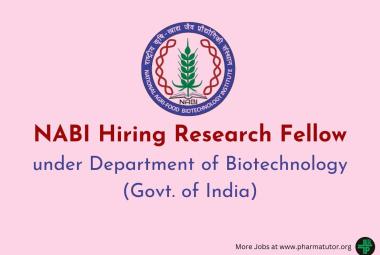About Authors:
Richa Sood
CTIPS,Jalandhar,
India.
Abstract:
The renin-angiotensin system (RAS) plays an important role in the pathogenesis and worsening of heart failure(HF). Recently developed class of drug, angiotensin receptor blockers (ARBs) block the RAS at the receptor level, and may therefore provide more complete blockade. Angiotensin II Receptor type 1 antagonists have been widely used in treatment of diseases like hypertension, heart failure, myocardial infarction and diabetic nephropathy. Their beneficial effects are related to inhibition of Angiotensin II by blockade of AT1 receptor. Valsartan is an orally active Angiotensin II receptor type 1 antagonist which causes reduction in blood pressure and is used in treatment of hypertension. It was first developed by Novartis and has wide market in the developed and the developing countries.
[adsense:336x280:8701650588]
Reference Id: PHARMATUTOR-ART-1250
History.
Valsartan was first developed by Novartis and was sold under the brand name DIOVAN and it currently holds the largest market share for the drug of its kind in the market. In the USA, valsartan is registered by the Food and Drug Administration (FDA) for use in the treatment of hypertension in children of 6 years and older and adolescents in the December 2008.
INTRODUCTION
Activation of the renin-angiotensin system (RAS) occurs in response to the decline in cardiac output in patients with heart failure (HF) or left ventricular dysfunction (LVD). Angiotensin (Ang) II is vasoactive and formed by the conversion of inactive Ang I by angiotensin converting enzyme (ACE). Further, in addition to its production by the classic RAS, Ang II can also be produced locally in many tissues and synthesized by ACE-independent pathways.
Activation of the RAS leads to increased levels of Ang II, which increases blood pressure and cardiac output. Thus, chronic activation with long-term elevations of Ang II is deleterious, resulting in vascular hypertrophy and progression of remodeling.Current treatment strategies for the treatment of post MI or chronic HF focus on attenuating the deleterious effects of Ang II. Angiotensin receptor blockers (ARBs), a more recentlydeveloped class of drug, block the RAS by preventing Ang II from binding to its type 1 receptor and may be able to provide more complete suppression of Ang II levels than canbe achieved with ACE inhibitors.
VALSARTAN
Valsartan belongs to the family of angiotensin II type1receptor (AT1) antagonists and posseses about 20,000 fold greater affinity for it than for the angiotensin II type 2 receptor (AT2). This action exert effects on blood pressure (BP) reduction, as well as decreases vascular smooth muscle contraction, inhibits sympathetic outflow, improves renal function and also leads to reduction in progression of atherosclerosis lesions .Also blockade of AT1 receptor by valsartan leads to increase in local angiotensin II concentration that stimulates the unblocked AT2 receptor The increase in AT2 receptor stimulation causes vasodialation through local production of bradykinin which in turn leads to a signaling cascade that increases the production of nitric oxide and cyclic guanosine 3’-5’-monophosphate at the endothelial level that provides protection against vascular dysfunction.
[adsense:468x15:2204050025]
Physical properties:
Table 1:- Physical properties of Valsartan.
|
Colour |
A white to off-white crystalline powder. |
|
Storage condition |
Stable in dry conditions(15-30°C) |
|
pKa value |
3.9,4.7 |
Pharmacokinetic parameters:
Table 2:- Pharmacokinetic parameters of valsartan.
|
Tmax |
3 hours |
|
Cmax |
6.40 mcg/ml |
|
T1/2 |
6-9 hours |
|
AUC |
10-35% |
|
Plasma protein binding |
85-99% |
|
Metabolites |
Valeryl 4-hydroxy valsartan |
|
Route of excretion |
Faeces (83%), urine (13%), metabolite (20%) |
Dose, Adverse effect and Drug-drug interaction of the Valsartan
Table 3:- Dose, Adverse effect and Drug-drug interaction of the Valsartan
|
Dose (oral) |
Hypertension
|
Adult: Initially, 80 mg once daily, increased to 160 mg once daily. Max: 320 mg daily. Elderly: > 75 years: Initially, 40 mg once daily. |
|
Heart failure |
Adult: 40 mg bid, may be increased to 160 mg bid if tolerated. |
|
|
Post myocardial infarction |
Adult: Start as early as 12 hours after MI in stable patients, at an initial dose of 20 mg bid, increased over a few weeks up to 160 mg bid if tolerated. |
|
|
Adverse Effects |
Dizziness, headache and migraine, epistaxis. Dose related orthostatic hypotension,hyperkalemia,respiratory disorder,oedema.
|
|
|
Drug-drug Interactions
|
Valsartan is contraindicated with NSAIDs and cyclosporine it causes increased risk of renal impairment and hyperkalemia.With general anesthetics, clozapine, dopamine agonists and other hypertensives valsartan causes increased risk of hypotension. Hyperkalemia can be caused during valsartan therapy with potassium-sparing diuretics, potassium supplements, ACE inhibitors and heparin.
|
|
Special warnings and special precautions for use:
(1) Concomitant use with potassium supplements ,potassium sparing diuretics, salt substitutes containing potassium,or other agents that may improve potassium levels (heparin, etc) is not recommended.monitoring of potassiun should be undertaken as appropriate.
(2) In patients with mild to moderate hepatic impairement,without cholestasis,Valsartan should be used with caution.
(3) Angiotensin receptor II Antagonist (AIIRAs) should not be initiated during pregnancy;alternative therapy should be started.
(4) The combination of captopril and valsartan in myocardial infarcation should not be initiated.
(5) In patients with heart failure,the triplle combination of an ACE inhibitor, beta blocker and valsartan has not shown any clinical benefit. This combination apparently increases risk of adverse effects and therefore not recommended.
(6) Patients with primary aldosteronism should not be treated with valsartan as their Renin Angiotensin System is not activated.
CONCLUSION-
In summary, ARBs, block the RAS at the receptor level, and may therefore provide a more complete blockade. ARBs are currently being tested as either an alternative or adjunctive therapy to ACE inhibitors in patients with or at high risk of developing HF.
References-
* Flesch G., Muller Ph., Lloyd P. Absolute bioavailability and pharmacokinetics of valsartan, an angiotenin II receptor antagonist in man.Eur J Clin Pharmcol 1997; 52: 115-120.
* Verdecchia P., Angeli F. Assessment of the optimal daily dose of valsartan in patients with hypertension, heart failure, or Both. ClinTherapeutics 2004; 26(4): 460-472.
* Martin J., Krum H. Role of Valsartan and other angiotensin receptor blocking agents in the management of cardiovascular disease. Pharmacol Res 2005; 46(3): 203-212.
* Herder SD., Weber E., Winkemann A., Herder C., Morck H.Efficacy and safety of angiotensin II receptor type 1 antagonist in children and adolescents. Paed Neph 2010; 25: 801-811.
* Hennekens CH, Albert CM, Godfried SL, Gaziano JM,Buring JE. N Engl J Med 1996; 335: 1660-8.
* Jamali AH, Wilson Tang WH, Khot UN, Fowler MB. ArchIntern Med 2001; 161: 667-72.
* Hoang T., Guarraia D. and Nicholle J, Valsartan Therapy in heart failure after myocardial infarction: the role of andothelial dependent vasorelaxation, Journal of Cardiovascular Pharmacology, 2007, 50, 703-707.
* Markham A. and Goa K. L., Valsartan. Areview of its pharmacology and therapeutic use in essential hypertension, Drugs 1997, 54,299–311.
NOW YOU CAN ALSO PUBLISH YOUR ARTICLE ONLINE.
SUBMIT YOUR ARTICLE/PROJECT AT articles@pharmatutor.org
Subscribe to Pharmatutor Job Alerts by Email
FIND OUT MORE ARTICLES AT OUR DATABASE









